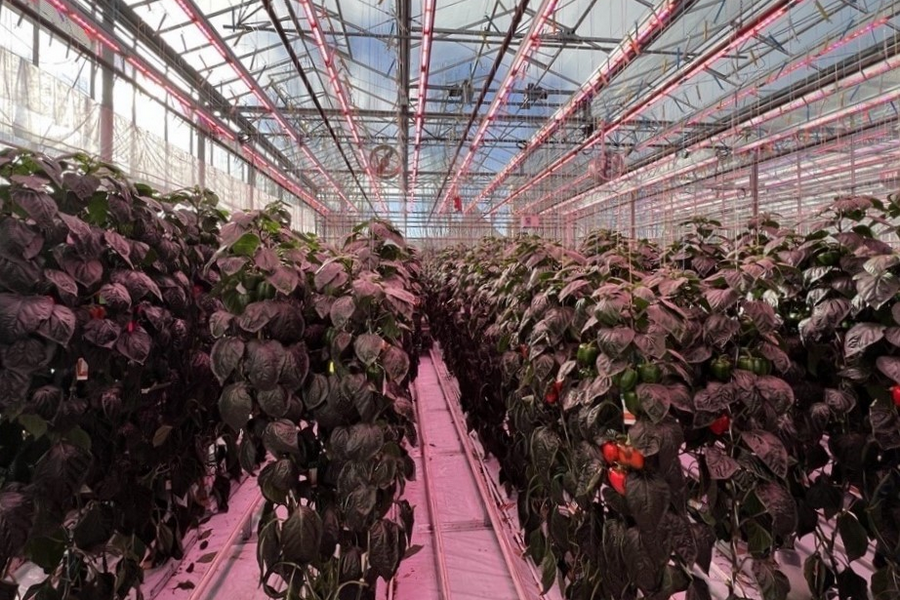Signify and the University of British Columbia has announced that their pepper production trial is now entering its fourth year. This trial, which focuses on optimizing dynamic lighting conditions, has delivered insights into how pepper plants respond to artificial lighting throughout the year.
As the trial enters its fourth year, its goal has become more holistic: to achieve a target production of over 40 kg/m² of peppers for a full-year cycle with a dynamic light recipe using GreenPower LED toplighting force 2.0 (TLF 2.0) with color control functionality and taking into account pruning strategy and variety selection.
New focus on dynamic light recipes and growing strategies
The journey toward this goal began in 2017 with Signify's first pepper trial in the Netherlands, where the feasibility of using LED lighting in pepper cultivation was being investigated. Since then, Signify has continued to push the boundaries of research, expanding the trials to Canada and beyond. In 2022, the first trial in UBC was set up to realize a yield of at least 34 kg/m2, with a stable weekly production of at least 0.7 kg/m2 in winter. The trial has continuously evolved to include different varieties and pruning strategies.

In this fourth year, the trial will focus on leveraging TLF 2.0—a cutting-edge, color-controllable LED light technology designed to fine-tune lighting recipes dynamically across growth stages and raising the production goal to over 40 kg/m² of peppers for a full-year cycle while improving the pruning strategy and variety selection. "As we entered the 2024-2025 season, the results have been particularly promising," noted Amos Bassi, plant specialist at Philips Horticulture LED Solutions. "With TLF 2.0 now integrated, we're exploring how dynamic light recipes can optimize crop steering, improving yield and quality."
Choosing the right parameters
Achieving optimal pepper growth under LED lighting requires a carefully balanced light recipe. However, light is not the only factor influencing plant growth. Environmental conditions, such as temperature, humidity, and CO₂ levels, are equally crucial. This trial integrates expertise from various industry leaders to provide state-of-the-art support. Syngenta and RijkZwaan supplied optimized seeds, BEVO Farms handled plant propagation, and Aranet's sensor technology monitored critical climate conditions. Climate control solutions from Priva and specialized substrates from Grodan further enhance growth environments. The trialed varieties—Gina, Ridona, and Silverstone—were selected specifically for their compatibility with LED lighting; choosing the suitable pepper variety is critical when working with LED lighting.
"Through our collaborative effort with industry experts, we have created the optimal environment for selected pepper varieties, where we see significant improvement in the quality and yield. We are excited to see the results of this trial and how it could impact the future of pepper cultivation," said Melina Biron, Research Manager – Plant Care Services at UBC
Combining insights from global trials
2025 will mark the culmination of this extensive research project. The final results will be presented in a comprehensive whitepaper, which will detail the outcomes of this trial and combine insights from all other pepper trials conducted around the world. By synthesizing this knowledge, Signify aims to provide growers with a definitive guide to optimizing pepper production using LED lighting, ensuring that they can continue to improve yields and quality well into the future.
TrendForce 2024 Global LED Lighting Market Analysis
Release Date: 01 February 2024 / 31 July 2024
Language: Traditional Chinese / English
Format: PDF and Excel
Page: 90-100 / Semi-Annual
|
If you would like to know more details , please contact:
|












